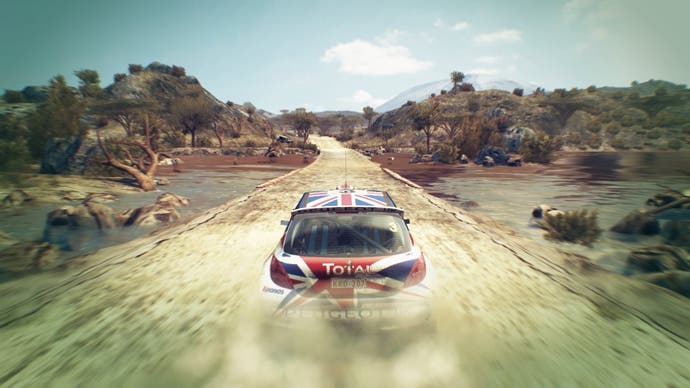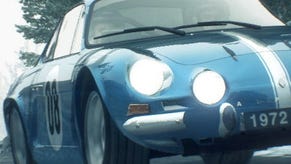DiRT 3: “The Americanisation might have gone too far.”
Codemasters on bringing the rally back.
It's been three years since Codemasters launched DiRT 2. Back then, rallying was a different beast. Influence from the X-Games and the popularity of Ken Block YouTube videos put the development team on a path to radical commentary and gnarly menu screens.
But now it's all grown-up. Here, in a sweeping interview with Eurogamer, chief games designer Paul Coleman reveals how DiRT has grown-up, too
Rally is seeing a resurgence. It had a lull over the past few years. WRC was a bit tired with Sébastien Loeb consistently winning every year. Fan and spectator numbers were considerably down, but with the rule changes this year, with Ken Block making appearances in WRC last year on a temporary basis and now coming in on a more permanent way, we'll see a real resurgence in the way rally is seen in the world.
The steps we're taking with DiRT 3 are a move to reflect the popularity of rally and the fact the fans out there wanted more rally content in the game. We're responding to that. It's the right thing to do based on what rally's doing in the world.
We've taken the professional motor sports feel of DiRT 1 and some of that action sports attitude we had in DiRT 2 and fused them together to create this more professional feeling rally game that also introduces some of those street cool elements, such as Ken Block's Gymkhana driving.
Normally we'd go off and make a GRID game in between our DiRT games. This is the first time we've had the opportunity to go from one DiRT game straight into the next. We've been able to do more work on developing physics and the weather conditions, stuff we've brought in from Formula One as well that's helped us. We're just, essentially, trying to create the definitive rally experience.

We used more rally drivers as consultants in the development of the game, finding out from Kris Meeke and Ken Block what it takes to be a rally driver, how rally cars actually behave. Yeah, we can do rally driving in Wales and spend a day behind the wheel of a Ford Escort Mark II, but until you actually drive one of these cars on the limit in competition, you don't get to fully appreciate those nuances.
Kris Meeke was hugely helpful because he's doing a testing role at Mini at the moment. His mindset is in developing and improving systems, so when he comes into the studio, he fits right into sitting down with our vehicle-handling designers helping them improve the systems they have in place.
In terms of technology we've taken from Formula One, it's mostly their weather system we've brought across. However, where in Formula One it was necessary to have races that developed and the weather conditions changed during an actual race, we're using it to have different weather conditions on different stages.
A stage could have three different weather conditions associated with it. However, that stage will only ever hold that one condition because our stages are shorter, and we want to give a feeling of progressing through a rally event.
You might start a rally stage in the morning, then have a rainy afternoon, then a sunset and then finally a stage at night with the headlights. We're using the technology they've developed in a slightly different way, but it's been very useful to us.
With rally you've got multiple surface types. When you throw rain down on mud, gravel, grass, it affects those surfaces differently than it does a tarmac surface. We have puddles developing. We've taken what they've given us and we've moved on.







